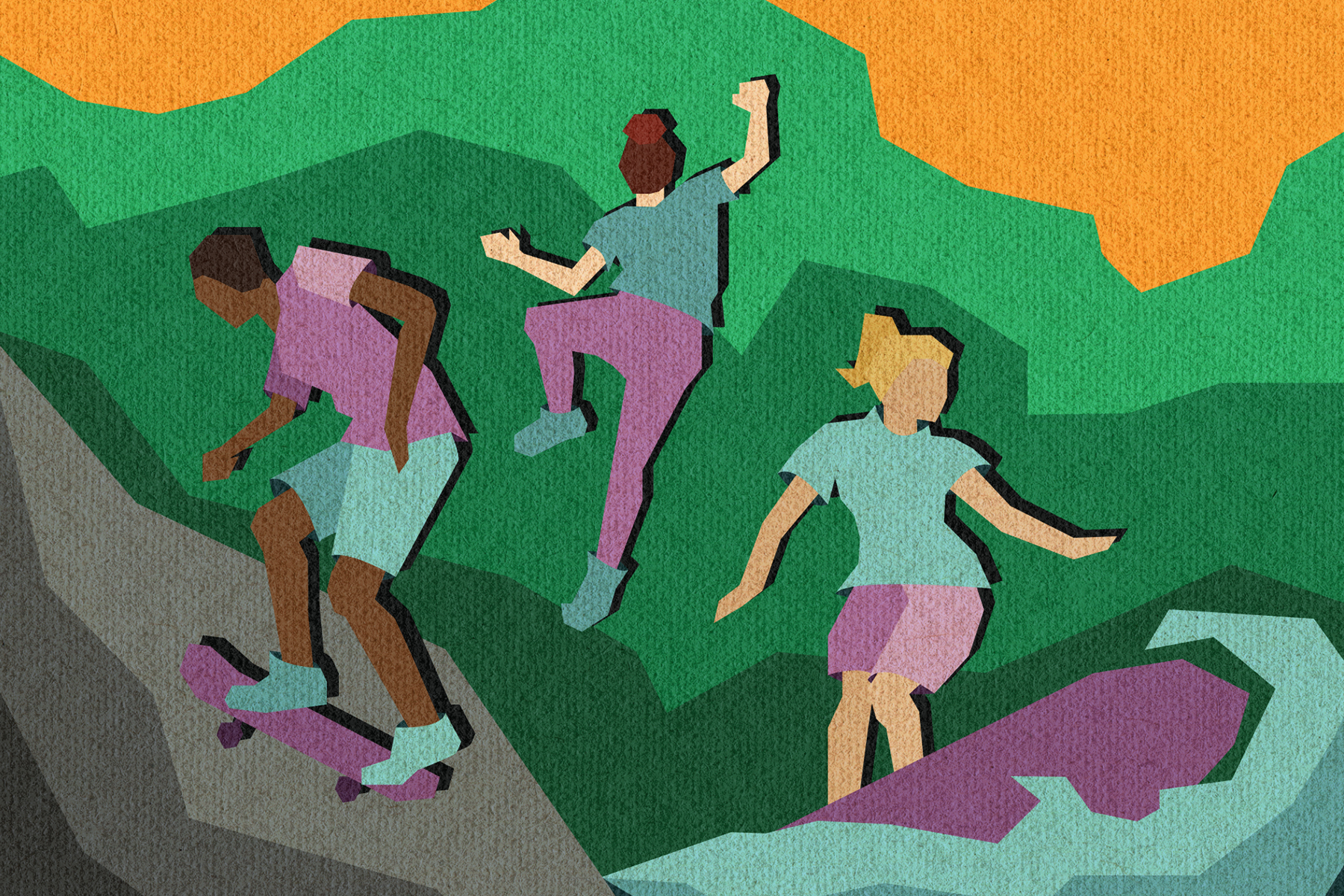This year, the Olympics added four new sports to the competition roster: climbing, surfing, karate and skateboarding. Although they are somewhat dissimilar, the through-line between them marks a step away from “quantifiable” sports such as swimming, track, soccer and basketball and toward more “qualitative” events like gymnastics or diving.
Every Olympic cycle, when I turn on my TV and toggle to whichever event happens to be on, I recall memories of events and competitions I haven’t thought of since four years prior.
This year, I came to the stunning realization that the last time I sat on my couch watching volleyball, I hadn’t yet started my freshman year of high school. I remember rooting strongly for Team USA victories, paying more attention to medal counts than the sports themselves. Now in college, as I watch badminton, volleyball, the triathlon or taekwondo, I feel a different draw to the Olympics. I cheer less for any particular country and more for whichever athlete’s performance catches my eye. Sometimes it is an American — Caeleb Dressel in the water or Suni Lee on the mat — and sometimes I root for athletes from other countries, like Peruvian skater Angelo Caro or Slovenian basketball player Luka Doncic. It is far more exciting to cheer for those who perform a sport skillfully and beautifully rather than those with whom I happen to feel geographically affiliated.
The enormous gap between each Olympic Games is part of what makes the experience so special. It is a treat that occurs only once in a blue moon. However, the time between each Olympic cycle can make it difficult to retain a dedicated audience with knowledge of each sport. By adding sports that are centered more on technical proficiency and the aesthetic beauty of movement, the Olympics help bridge that gap without relying on the staying power of star athletes. Events that are enticing to watch without knowledge of the scoring or competitor have a power to draw and retain viewers who may not start out as fans but have the potential to become obsessed with previously obscure sports.
With four new sports, the Olympics also adds new scoring systems. Climbing is scored based on three equal rounds: speed climbing, bouldering and lead climbing. In speed climbing, athletes compete head-to-head in a race up the same set climb. In bouldering, climbers are tested on their ability to solve shorter problems in a set amount of time. In lead climbing, the Olympians will be scored for their progress up a taller wall climb. Their placements in the three events are then multiplied together to give a final score. Although each facet is measurable, bouldering and lead climbing as disciplines reward fluidity, flexibility and power. It is not necessarily the climber with the most brute strength who performs best. Rather, it is the climber that can leverage their momentum and body weight to seemingly float up walls that appear impossible to amateurs like myself.
Surfing and skateboarding are scored similarly to each other. Skateboarders perform 45-second runs and individual tricks, and surfers are judged based on the waves they catch. In each case, the competitor throws out their worst scores, preserving the 5 best scores out of 7 runs and tricks in skateboarding and the best two waves in surfing. These scores are compared to other competitors to see who moves on to finals or wins. Both of these sports are judged purely on aesthetic appeal: The skill, technical prowess, athleticism and beauty of each trick, on water or concrete, is directly translated either into victory or defeat.
The Olympics’ final new sport, karate, is broken up into two categories: kata and kumite. Kumite is a combat discipline, scored on hits made to an opponent’s body. Kata is a performance of forms, where an individual makes solo moves that are scored by judges. This second system of competition, kata, again reinforces the focus on aesthetics in the new Olympic sports. It showcases athletic and technical prowess through athletes’ individual performances. They are stunning to watch — not solely due to the pure physicality of the acts, but also due to the athletes’ grace and fluidity in motion.
These additions to the Olympics all center around qualitative judgment. Karate’s kumite contest and sport climbing serve as exceptions, although success at those sports is tied directly to fluidity and grace in movement. This commonality makes sense when considering the nature of the Olympics. Once every four years, millions tune in to watch events that they are barely familiar with. Although infographics and short videos can inform viewers and educate them on the sports they watch, a sort of “grabbiness” is necessary to draw in casual viewers.
This can have many manifestations. Usain Bolt’s historic victories drew millions to watch track. A similar effect has been seen in swimming, with Michael Phelps’ and Katie Ledecky’s dominance in the pool, and in gymnastics with Simone Biles’ elite performances. Climbing, karate, skateboarding and surfing are yet to possess the draw of big-name athletes that more established sports rely on, so it makes sense that they would lean upon the nature of the sport.
Aesthetic sports are already incredible to watch, even beyond the name-brand athletes that compete in them. Gymnastics, figure skating, BMX biking and synchronized diving don’t necessarily catch my eye because I am obsessed with each athlete’s story (not that I don’t become more and more invested throughout the games). They catch my eye because they are beautiful to watch. As it becomes harder and harder to captivate audiences and compete with instant replays and Instagram highlight montages, adding sports with instant and astonishing visual appeal is a savvy move by the Olympics.
Even though I am far from a connoisseur of skateboarding, gymnastics or BMX biking, when I turn on the TV to the street skateboarding finals, I am immediately captured by the nature of the sport. Knowing the Olympics are leaning into sports that leave me awed rather than confused is heartening. It leaves me excited for the rest of this year’s games, as well as for the new developments the Olympics will see in years to come.

















